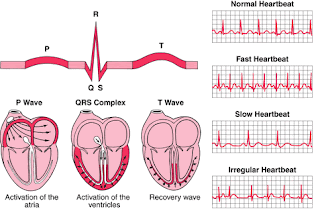Biomedical Project Ideas: Visualization tool for Myocardial Strain Tensors
The heart is a complex three-dimensional structure with mechanical properties that are inhomogeneous, non-linear, time-variant and anisotropic. These properties affect major physiological factors within the heart, such as the pumping performance of the ventricles, the oxygen demand in the tissue and the distribution of coronary blood flow.
During the cardiac cycle the heart muscle tissue is deformed as a consequence of the active contraction of the muscle fibers and their relaxation respectively. A mapping of this deformation would give increased understanding of the mechanical properties of the heart. The deformation induces strain and stress in the tissue which are both mechanical properties and can be described with a mathematical tensor object.



